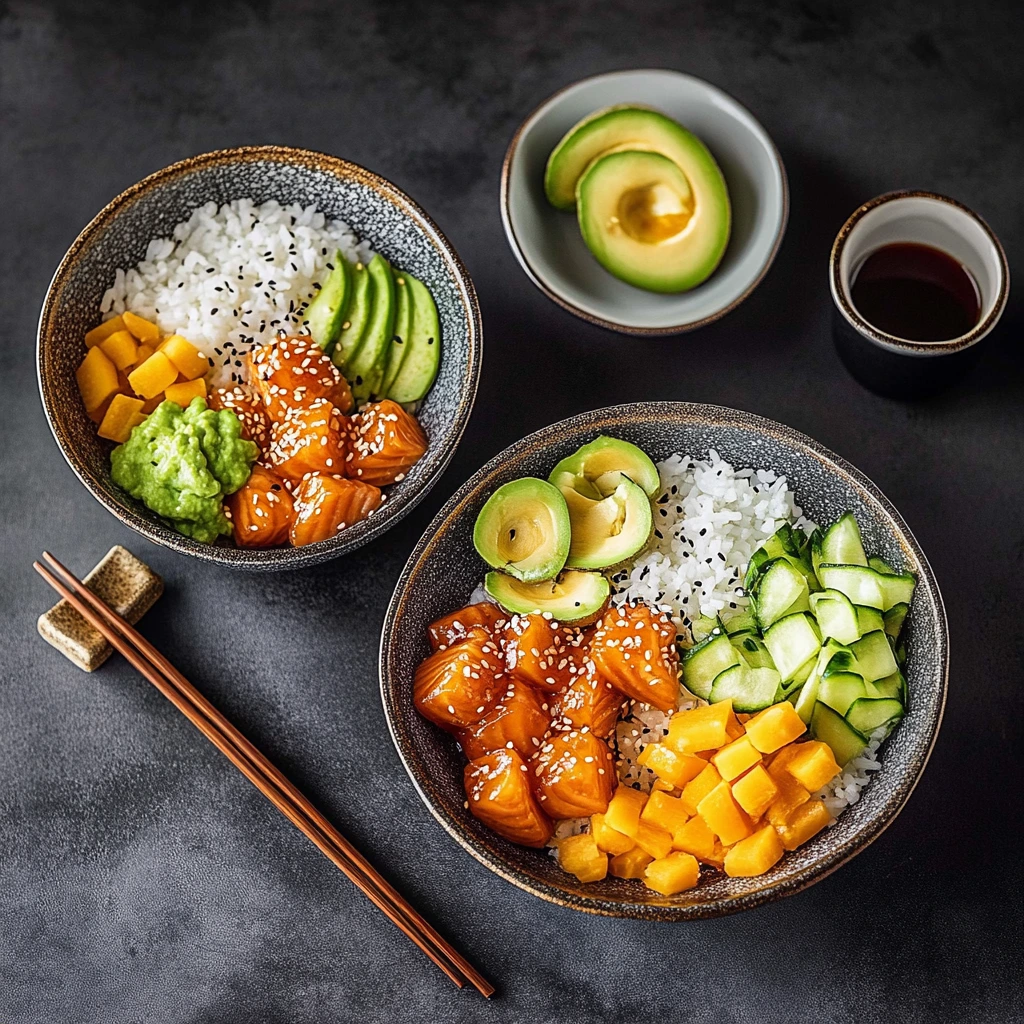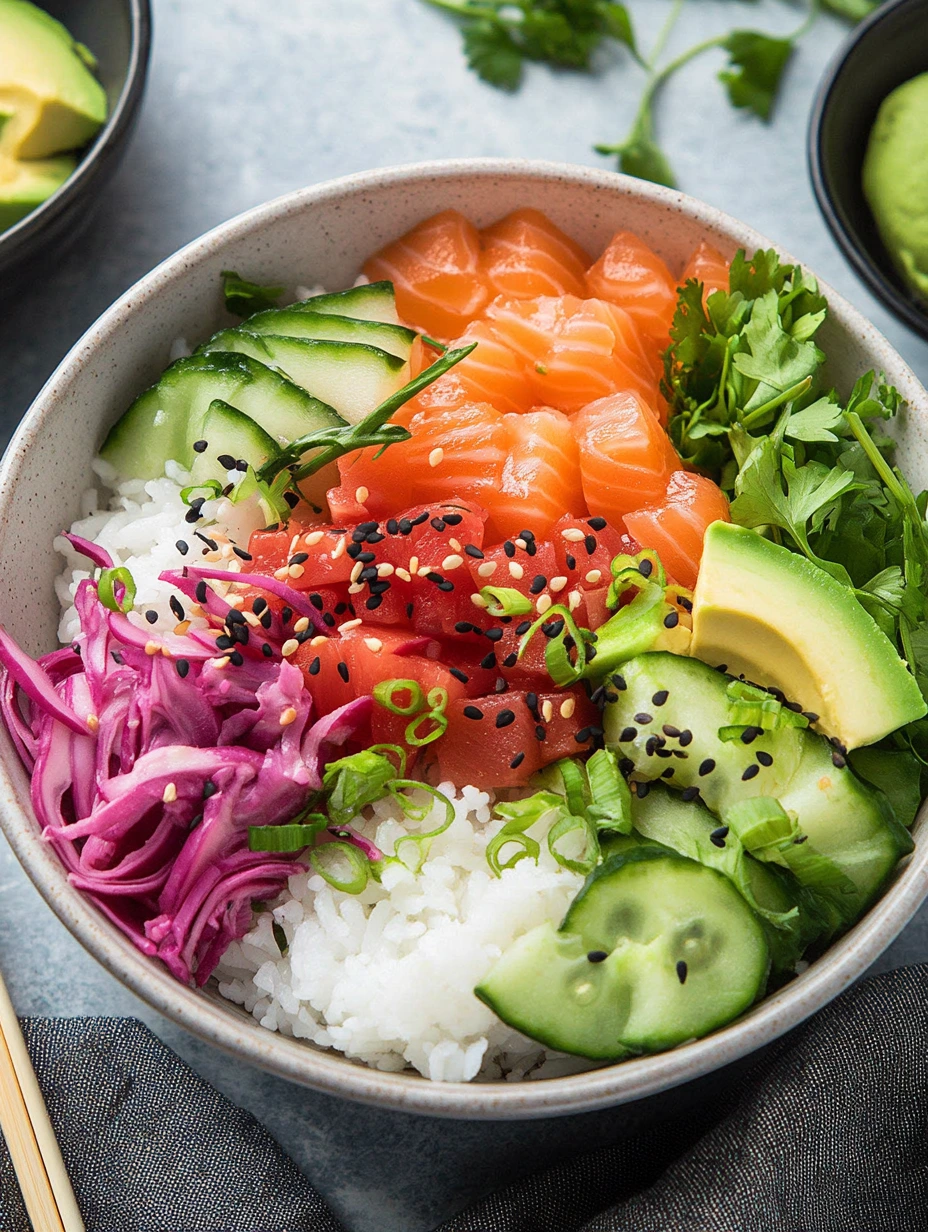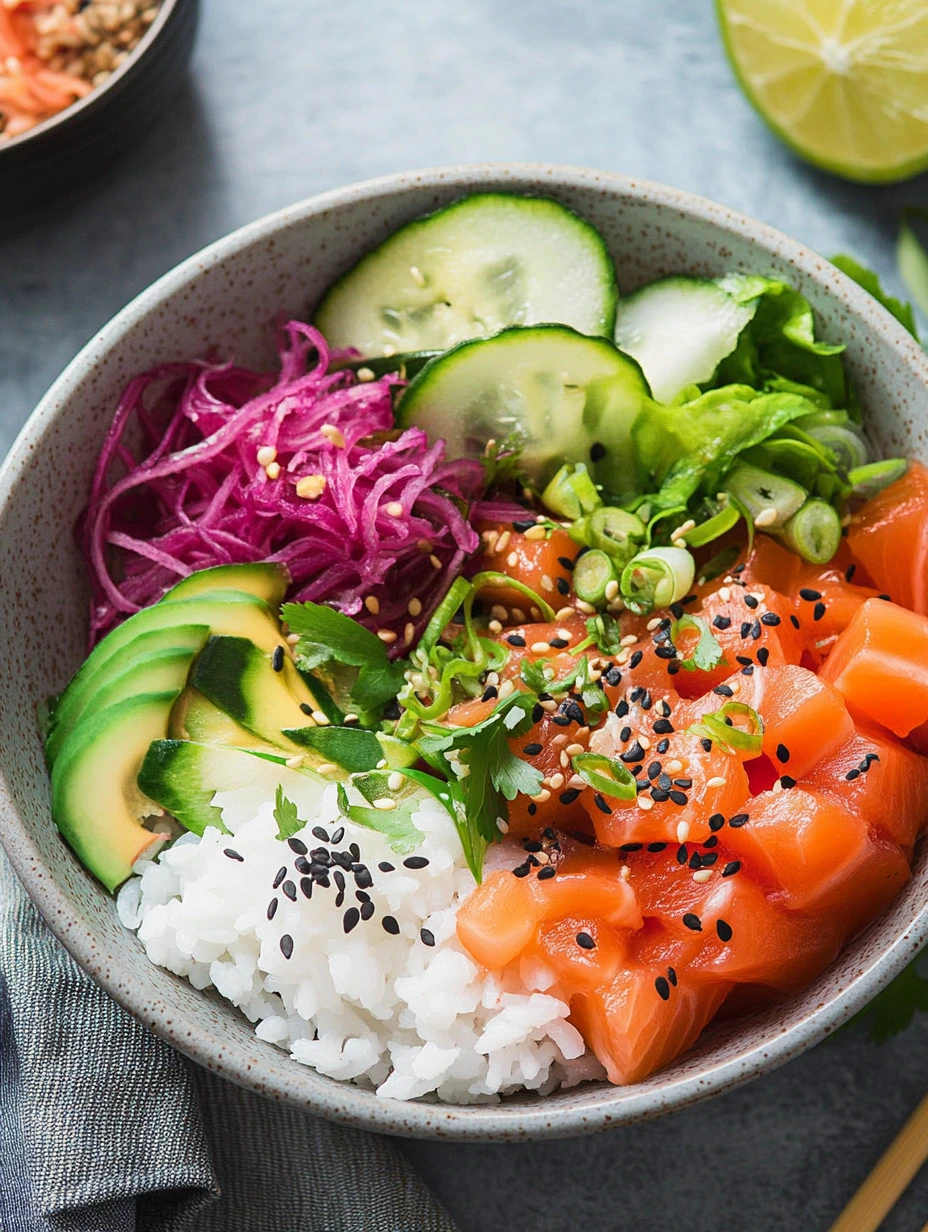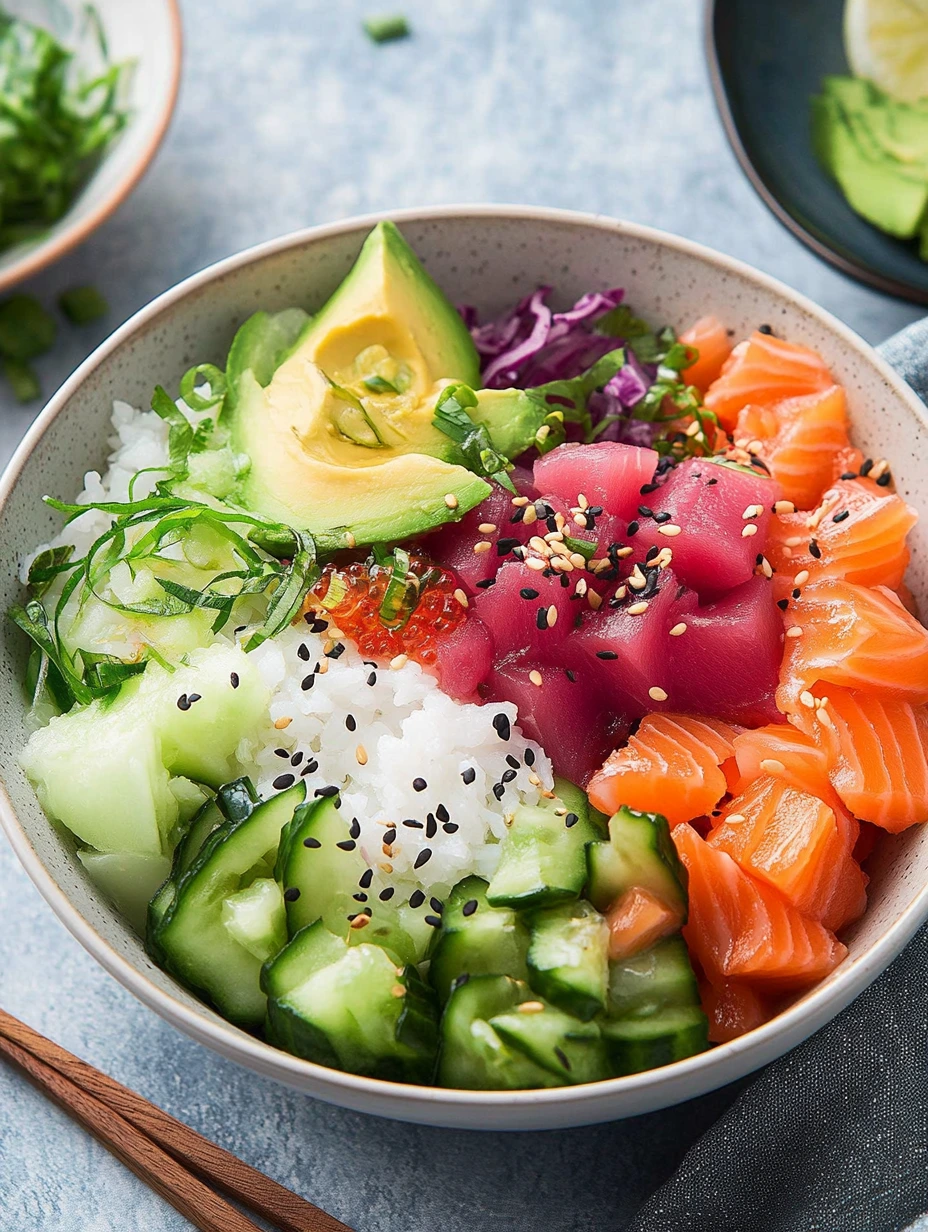 Pin it
Pin it
The poké bowl whisks us away to Hawaii's sunny beaches with its amazing freshness and perfect balance of flavors and textures. This traditional Hawaiian dish, once just a simple fisherman's snack, has become a worldwide food sensation. And for good reason! The mix of marinated raw fish, fragrant rice, and colorful toppings creates a taste experience that's both refreshing and filling. Poké captures the heart of Pacific Island cooking: fresh ingredients, clean flavors, and a thoughtful preparation that lets each element shine on its own.
 Pin it
Pin it
Outstanding Ingredients
- Raw fish: Go for sashimi-grade salmon or tuna. Ask your fish seller for "sashimi grade" fish meant to be eaten raw. Freshness is super important here - look for firm, shiny flesh without any strong smell. If you're not comfortable with raw fish, cooked versions with pan-seared salmon or shrimp taste great too.
- Sushi rice: This short-grain Japanese rice gets slightly sticky when cooked, making a perfect base to soak up sauce flavors and support the other ingredients. Washing it thoroughly before cooking is key to get rid of extra starch and achieve that just-right texture - not too sticky, not too dry.
- Avocado: Pick a perfectly ripe avocado that gives slightly when pressed but isn't mushy. Its creamy texture wonderfully balances the crunch of veggies and firmness of fish. To check if it's ready, pull off the little stem nub - a light green color means it's good to eat.
- Ponzu sauce: This citrusy Japanese sauce made from soy sauce, citrus fruits, and rice vinegar adds tanginess that perfectly balances the richness of fish and avocado. If you can't find ready-made ponzu, you can easily make some by mixing soy sauce with lime or orange juice and a dash of rice vinegar.
- Nori seaweed: Usually sold in dried sheets, nori seaweed brings a distinct ocean flavor and unique texture. Crumbled or cut into thin strips, it boosts the sea-like character of the dish while adding important nutrients.
Careful Preparation
- The perfect cut:
- For authentic poké, cut the fish into even cubes about 1.5 cm across. This size gives you a balanced bite where the fish keeps its texture while soaking up enough marinade. Use a very sharp knife and work on a clean, cold cutting board to keep the fish fresh and intact.
- The crucial marinade:
- The traditional Hawaiian marinade balances salt, umami, and a touch of sweetness. Gently mix the fish with soy sauce, sesame oil, and a pinch of sea salt to bring out all the flavors. Let it marinate just long enough to flavor the fish without "cooking" its surface - usually 15 minutes is enough. Too long would change the delicate texture of the fish.
- The right rice:
- After cooking the rice, don't pack it down in the bowl. Spread it in a loose layer and let it cool to room temperature before adding other ingredients. Unlike what many think, traditional poké rice isn't seasoned with vinegar like sushi rice - its plain flavor lets the other components really stand out.
- The art of assembly:
- Putting together a poké bowl isn't just about looks - it directly affects how it tastes. Arrange ingredients in separate sections rather than mixing everything. This way, you can enjoy each element on its own while creating personal combinations with every bite. Keep wetter items (like cucumber) apart from crunchy ones (like taro chips) until the last minute.
- The finishing touch:
- A pinch of smoked sea salt or chili flakes just before serving wakes up all the flavors. If you have toasted sesame oil, a few drops will add amazing aromatic depth. Don't forget fresh garnishes like chives or thinly sliced green onions that bring an herbal note that fits perfectly with the dish.
 Pin it
Pin it
Perfect Pairings
This dish usually stands on its own, but for a fuller meal, serve your poké bowl with a light miso soup in a separate small bowl. Its warmth and umami perfectly complement the freshness of the poké. For special occasions, steamed gyoza or edamame sprinkled with sea salt make a great starter. For drinks, go with cold Japanese green tea or, if you like, a light Asian-style lager beer that won't overpower the dish's subtle flavors.
Regional Twists
For a California version, add fresh citrus slices like grapefruit or orange that bring natural acidity and contrast with the richness of the fish. Spicy food fans will love the Korean take with finely chopped kimchi and gochujang sauce thinned with a bit of honey. For a Japanese interpretation, swap out some rice for cold soba noodles and add marinated shiitake mushrooms and colorful pickled vegetables for a completely different taste experience.
 Pin it
Pin it
Smart Storage
Storing an assembled poké bowl isn't recommended, but you can prep all elements separately ahead of time. Marinated fish can keep in the fridge for up to 24 hours, tightly wrapped in plastic wrap. Rice stays good for up to two days in an airtight container. To bring back its texture before serving, sprinkle it with a few drops of water and warm it slightly. Cut vegetables can be stored in airtight containers with a paper towel to catch extra moisture.
Frequently Asked Questions
- → How do I pick fish that's good for poke?
- Always look for fish labeled 'sushi-grade' or 'sashimi-grade,' meaning it's fresh enough to eat raw. Buy it on the same day you plan to make the dish, and keep it in the fridge until serving.
- → Can I prep this ahead of time?
- You can prepare all the components separately and refrigerate them, but don't let the fish marinate for more than 30 minutes to avoid it 'cooking' from the acidity. Assemble everything just before serving for the best taste.
- → How can I make this vegetarian or vegan?
- Switch out the salmon for firm tofu, mushrooms, or even fruits like mango. Use vegan mayo for the sauce or try a sesame oil-based dressing for a plant-based version.
- → Should the rice in a poke bowl be hot or cold?
- Ideally, serve the rice at room temperature or slightly warm. It shouldn't be hot to avoid cooking the raw fish with heat.
- → What extra toppings can I try in a poke bowl?
- Go wild with toppings! Add nori seaweed strips, sliced radishes, pineapple chunks, mango pieces, fish roe, wonton crisps, kimchi, or Japanese pickles to experiment with textures and flavors.
